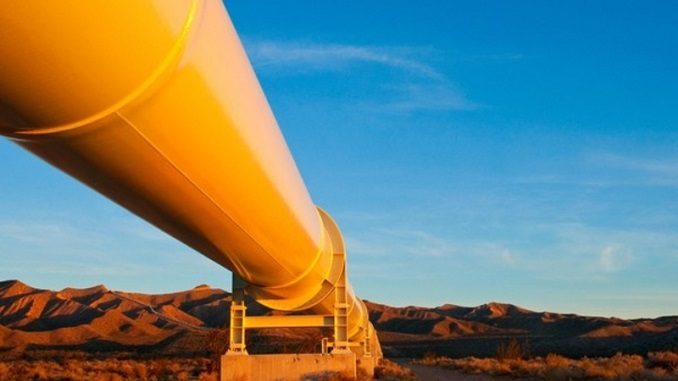
Attraction of investments for the transit of Iranian gas to Tajikistan can be a turning point in improving economic relations between the two countries. This was stated by the Iranian parliament speaker, Ali Larijani, on the sidelines of the 10th plenary meeting of the Asian Parliamentary Assembly (APA), Iranian media outlets reported as quoted by Azer News.
Larijani told Vice-Speaker of the Tajikistan’s Parliament Khairiniso Yusufi that investments could be attracted, in particular, for electricity generation and water transfer from Tajikistan to Iran and sending gas from the Islamic Republic to the countries of Central Asia.
Commenting on the high scale of Iranian companies’ presence on the Tajik market and assistance in improving the economy of this country, he said that the relations between Iran and Tajikistan can be strengthened taking into account the commonality between the two states.
The APA meeting began in Istanbul on November 21 and will end today, on November 24. The meeting is devoted to the theme of maintaining peace and development in Asia. The ninth APA meeting was held in Cambodia in November 2016.
Iran has vast energy resources — the world’s largest proven natural gas reserves and the second-largest trove of oil in the Persian Gulf. Iran’s proven gas reserves amount to 33.5 trillion cubic meters of gas. Iran’s gross gas output stands at 285bn m3/yr. The country plans to increase this volume to about 440 bcm/y by 2021 after full operational of South Pars and starting gas production from other projects like Kish gas field.
However, the country lacks necessary export infrastructure to realize gas sales. Under sanctions, Iran was banned from the global financial system, preventing the development of its oil and gas fields and necessary infrastructure.
Relations between Tajikistan and Iran have seldom received much attention, usually because of the latter’s front-page interactions with the larger, more influential states in the Middle East. Nevertheless, Iran’s relations with the former Soviet republics in Central Asia will be likely to garner significant attention in the coming years, as Tehran seeks to act upon its hegemonic ambitions in the area.
For a number of reasons, Iranian aspirations toward Tajikistan have the potential to be more impactful than its relations with other Central Asian states. First, Tajikistan is comparatively the poorest country in Central Asia; it lacks the oil wealth of Kazakhstan or the natural gas of Turkmenistan, leaving it highly susceptible to foreign investment and expertise as it seeks to develop its economy. In the past and present, a host of nations, including Saudi Arabia and Iran, have used economic aid as a means of influencing their political standing in Tajikistan.
Iran was among the first countries to open an embassy in Dushanbe in 1992, although its hopes for garnering influence in the newborn state was quickly diminished by the outbreak of the civil war. Iran refrained from officially supporting any side in the conflict, and displayed its neutrality by hosting three peace conferences in 1994, 1995, and 1997.
Relations between the two countries were politically sound and economically prosperous during the late 1990s and early 2000s, with bilateral trade between the two growing from $40 million in 2000 to $140 million in 2007, eventually surpassing $200 million in 2011.
Iran already proved to be a useful, albeit intimidating ally when it intervened in Tajikistan’s favor in a recent Tajik-Uzbek railroad dispute by threatening to stop all Uzbek freight passing through Iran, using the pretense that the aforementioned dispute was interfering in Iran’s economic interests in Tajikistan.
It’s no secret that Tehran may well be looking to build for itself what the former U.S. ambassador to Tajikistan calls a “Persian axis” between Iran, Afghanistan, and Tajikistan. This axis also appears to be actively recruiting new members. One prospective member could be Kyrgyzstan, especially with the recent announcement that Iran will develop hydroelectric plants and expand bilateral trade with the small Central Asian state. Nonetheless, observers would be prudent to keep an eye on relations between these two countries, especially as Iran continues to assert itself in the region.
